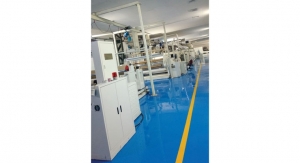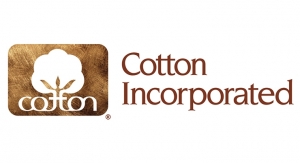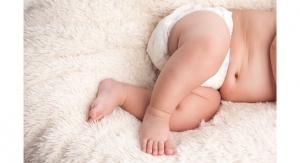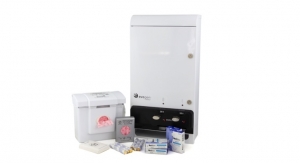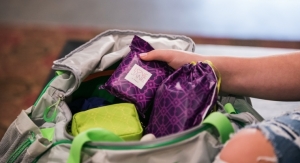02.22.17
Technavio market research analysts forecast the global pantyliner market to grow at a CAGR of around 5% during the forecast period, according to their latest report.
The market study covers the present scenario and growth prospects of the global pantyliner market for 2017-2021. The report also lists non-organic pantyliner and organic pantyliner as the two main product segments of which non-organic pantyliners held the majority share of close to 92% in 2016, owing to earlier introduction and penetration in the market.
Technavio’s analysts highlight the following three drivers that are contributing to the growth of the global pantyliner market:
Currently, women are more aware and open minded about well-being and feminine hygiene. Pantyliners allow women to partake in physical activities without worrying about issues like discharge or menstrual flow. As these products ensure feminine hygiene while carrying out day-to-day tasks, the market will experience a high growth rate in the forecast period. Earlier, lack of awareness among older women had hindered the growth of pantyliners in the market. However, targeted marketing by vendors is likely to increase the adoption of pantyliners during the forecast period.
“Financial independence, coupled with an increase in the working women population, has created demand for feminine hygiene products. Hence, it has become easier for vendors to target women directly and influence their purchasing behavior, leading to a surge in demand for pantyliners in the market,” says Amber Chourasia, a lead analyst at Technavio for health and wellness research.
Earlier, the average age of puberty among girls was 12, and this has fallen to 10−11 years and as early as seven years. In recent years, girls have been entering puberty at an early age. Some of the major reasons for this include unhealthy food habits and a rise in obesity. Stress at an early age is also leading to early onset of puberty among girls.
A typical woman may have as many as 400 periods in her lifetime. This, coupled with early puberty, will lead to increased usage of sanitary products in her lifetime. Early puberty leads to vaginal discharge, creating unhygienic conditions for the individual, which will further drive the demand for pantyliners.
Further, a wide variety of pantyliners is available in the market, which is manufactured according to the needs of women. For instance, individuals can use them for light menstrual flow, daily vaginal discharge, uncertain spotting, post-intercourse discharge, urinary incontinence, and bowel incontinence. Manufacturers are also introducing innovations such as breathable layers and side wings, which are considered more comfortable and fresh.
“Currently, women are more open to sharing their views regarding personal hygiene products. The number of blogs that create awareness on female health issues has surged due to this open environment, and they are instrumental in creating demand for feminine hygiene products,” says Chourasia.
The market study covers the present scenario and growth prospects of the global pantyliner market for 2017-2021. The report also lists non-organic pantyliner and organic pantyliner as the two main product segments of which non-organic pantyliners held the majority share of close to 92% in 2016, owing to earlier introduction and penetration in the market.
Technavio’s analysts highlight the following three drivers that are contributing to the growth of the global pantyliner market:
- Rising awareness and evolving purchasing behavior
- Early onset of puberty
- Evolving lifestyles of women
Currently, women are more aware and open minded about well-being and feminine hygiene. Pantyliners allow women to partake in physical activities without worrying about issues like discharge or menstrual flow. As these products ensure feminine hygiene while carrying out day-to-day tasks, the market will experience a high growth rate in the forecast period. Earlier, lack of awareness among older women had hindered the growth of pantyliners in the market. However, targeted marketing by vendors is likely to increase the adoption of pantyliners during the forecast period.
“Financial independence, coupled with an increase in the working women population, has created demand for feminine hygiene products. Hence, it has become easier for vendors to target women directly and influence their purchasing behavior, leading to a surge in demand for pantyliners in the market,” says Amber Chourasia, a lead analyst at Technavio for health and wellness research.
Earlier, the average age of puberty among girls was 12, and this has fallen to 10−11 years and as early as seven years. In recent years, girls have been entering puberty at an early age. Some of the major reasons for this include unhealthy food habits and a rise in obesity. Stress at an early age is also leading to early onset of puberty among girls.
A typical woman may have as many as 400 periods in her lifetime. This, coupled with early puberty, will lead to increased usage of sanitary products in her lifetime. Early puberty leads to vaginal discharge, creating unhygienic conditions for the individual, which will further drive the demand for pantyliners.
Further, a wide variety of pantyliners is available in the market, which is manufactured according to the needs of women. For instance, individuals can use them for light menstrual flow, daily vaginal discharge, uncertain spotting, post-intercourse discharge, urinary incontinence, and bowel incontinence. Manufacturers are also introducing innovations such as breathable layers and side wings, which are considered more comfortable and fresh.
“Currently, women are more open to sharing their views regarding personal hygiene products. The number of blogs that create awareness on female health issues has surged due to this open environment, and they are instrumental in creating demand for feminine hygiene products,” says Chourasia.

